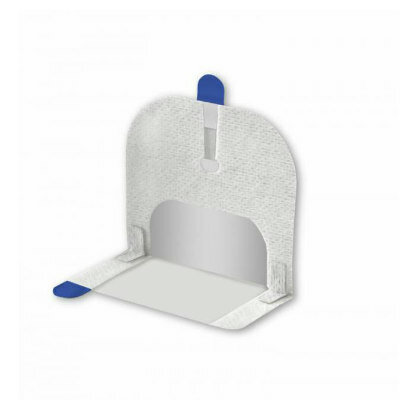Automated Cancer Diagnostic Method Combines Cutting-Edge Ultrasound Technology with AI
|
By MedImaging International staff writers Posted on 07 Jun 2023 |

Each year, over 40,000 new thyroid cancer cases are reported. While 60-80% of patients with thyroid tumors undergo biopsies, the financial and potential physical toll of these procedures may be unnecessary for those with benign tumors. It is presently challenging for medical practitioners to accurately gauge the severity of a tumor, with different doctors having divergent opinions on a tumor's threat level.
Standard ultrasound methods, which generate images of tissues and organs based on the sound waves they reflect, are efficient at identifying thyroid tumors. However, the technology can struggle to distinguish the minute sounds emitted from small blood vessels, or microvasculature, from those of the surrounding tissue, despite microvasculature providing vital clues about a mass's cancerous nature. Although the introduction of contrast agents (chemicals easily visualized and commonly used in medical imaging procedures) allows ultrasound to display detailed images of tumor microvasculature, these substances need to be injected into patients and sometimes cause adverse side effects. While more recent ultrasound techniques can offer clearer nodule images, the ultimate evaluation still relies on the physicians' subjective judgment.
Researchers at the Mayo Clinic College of Medicine and Science (Rochester, MN, USA) have demonstrated that a pioneering cancer diagnostic method, which combines advanced ultrasound techniques with artificial intelligence (AI), can effectively diagnose thyroid cancer. This method — referred to as high-definition microvasculature imaging, or HDMI — noninvasively captures images of the minute vessels within tumors and, based on vessel characteristics, automatically categorizes the masses. The researchers believe that HDMI could potentially resolve the long-standing diagnostic challenge of assessing thyroid tumors in a clinical setting.
The researchers developed HDMI in an effort to develop an affordable, noninvasive imaging solution for evaluating thyroid tumors that could deliver quantifiable results and minimize errors. This system uses machine learning, a subset of AI, to assess high-resolution images of tumor microvasculature. The technique has already shown potential in accurately assessing breast tumors. In a recent study, the team tested HDMI on thyroid tumors in 92 patients. They captured images of the tumors using HDMI and analyzed a dozen features related to the size and shape of the microvasculature in the images, including their density and branching points. All patients in the study, in consultation with their physicians, chose to have their tumors biopsied to confirm their malignancy status. Those with tumors deemed cancerous underwent surgery for the removal of the mass.
The researchers provided their machine learning algorithms with 70% of their imaging data from the patient tumors, along with the malignancy status, to teach algorithms how to interpret various features. Through a process of trial and error, the algorithms constructed predictive models, which were then used to determine the status of tumors imaged in the remaining 30% of the data. HDMI's classifications were accurate 89% of the time, based on the clinical assessments of the biopsies and surgeries. These results suggest that HDMI could be a more reliable diagnostic method than traditional techniques and could spare numerous patients from unnecessary surgeries in the future. The researchers are now refining the method to enhance its accuracy even further. They plan to investigate its performance in diagnosing other types of cancer and whether it can assist in monitoring the effectiveness of chemotherapy on cancerous growths.
“Because HDMI allows you to objectively differentiate benign nodules from malignant ones, it could greatly improve diagnostic accuracy and reduce the number of unnecessary surgeries being done now,” said study author Azra Alizad, M.D., a professor of radiology and biomedical engineering at Mayo Clinic.
Related Links:
Mayo Clinic
Latest Ultrasound News
- Deep Learning Advances Super-Resolution Ultrasound Imaging
- Novel Ultrasound-Launched Targeted Nanoparticle Eliminates Biofilm and Bacterial Infection
- AI-Guided Ultrasound System Enables Rapid Assessments of DVT
- Focused Ultrasound Technique Gets Quality Assurance Protocol
- AI-Guided Handheld Ultrasound System Helps Capture Diagnostic-Quality Cardiac Images
- Non-Invasive Ultrasound Imaging Device Diagnoses Risk of Chronic Kidney Disease
- Wearable Ultrasound Platform Paves Way for 24/7 Blood Pressure Monitoring On the Wrist
- Diagnostic Ultrasound Enhancing Agent to Improve Image Quality in Pediatric Heart Patients
- AI Detects COVID-19 in Lung Ultrasound Images
- New Ultrasound Technology to Revolutionize Respiratory Disease Diagnoses
- Dynamic Contrast-Enhanced Ultrasound Highly Useful For Interventions
- Ultrasensitive Broadband Transparent Ultrasound Transducer Enhances Medical Diagnosis
- Artificial Intelligence Detects Heart Defects in Newborns from Ultrasound Images
- Ultrasound Imaging Technology Allows Doctors to Watch Spinal Cord Activity during Surgery

- Shape-Shifting Ultrasound Stickers Detect Post-Surgical Complications
- Non-Invasive Ultrasound Technique Helps Identify Life-Changing Complications after Neck Surgery
Channels
Radiography
view channel
Novel Breast Imaging System Proves As Effective As Mammography
Breast cancer remains the most frequently diagnosed cancer among women. It is projected that one in eight women will be diagnosed with breast cancer during her lifetime, and one in 42 women who turn 50... Read more
AI Assistance Improves Breast-Cancer Screening by Reducing False Positives
Radiologists typically detect one case of cancer for every 200 mammograms reviewed. However, these evaluations often result in false positives, leading to unnecessary patient recalls for additional testing,... Read moreMRI
view channel
PET/MRI Improves Diagnostic Accuracy for Prostate Cancer Patients
The Prostate Imaging Reporting and Data System (PI-RADS) is a five-point scale to assess potential prostate cancer in MR images. PI-RADS category 3 which offers an unclear suggestion of clinically significant... Read more
Next Generation MR-Guided Focused Ultrasound Ushers In Future of Incisionless Neurosurgery
Essential tremor, often called familial, idiopathic, or benign tremor, leads to uncontrollable shaking that significantly affects a person’s life. When traditional medications do not alleviate symptoms,... Read more
Two-Part MRI Scan Detects Prostate Cancer More Quickly without Compromising Diagnostic Quality
Prostate cancer ranks as the most prevalent cancer among men. Over the last decade, the introduction of MRI scans has significantly transformed the diagnosis process, marking the most substantial advancement... Read moreNuclear Medicine
view channel
New SPECT/CT Technique Could Change Imaging Practices and Increase Patient Access
The development of lead-212 (212Pb)-PSMA–based targeted alpha therapy (TAT) is garnering significant interest in treating patients with metastatic castration-resistant prostate cancer. The imaging of 212Pb,... Read moreNew Radiotheranostic System Detects and Treats Ovarian Cancer Noninvasively
Ovarian cancer is the most lethal gynecological cancer, with less than a 30% five-year survival rate for those diagnosed in late stages. Despite surgery and platinum-based chemotherapy being the standard... Read more
AI System Automatically and Reliably Detects Cardiac Amyloidosis Using Scintigraphy Imaging
Cardiac amyloidosis, a condition characterized by the buildup of abnormal protein deposits (amyloids) in the heart muscle, severely affects heart function and can lead to heart failure or death without... Read moreGeneral/Advanced Imaging
view channel
New AI Method Captures Uncertainty in Medical Images
In the field of biomedicine, segmentation is the process of annotating pixels from an important structure in medical images, such as organs or cells. Artificial Intelligence (AI) models are utilized to... Read more.jpg)
CT Coronary Angiography Reduces Need for Invasive Tests to Diagnose Coronary Artery Disease
Coronary artery disease (CAD), one of the leading causes of death worldwide, involves the narrowing of coronary arteries due to atherosclerosis, resulting in insufficient blood flow to the heart muscle.... Read more
Novel Blood Test Could Reduce Need for PET Imaging of Patients with Alzheimer’s
Alzheimer's disease (AD), a condition marked by cognitive decline and the presence of beta-amyloid (Aβ) plaques and neurofibrillary tangles in the brain, poses diagnostic challenges. Amyloid positron emission... Read more.jpg)
CT-Based Deep Learning Algorithm Accurately Differentiates Benign From Malignant Vertebral Fractures
The rise in the aging population is expected to result in a corresponding increase in the prevalence of vertebral fractures which can cause back pain or neurologic compromise, leading to impaired function... Read moreImaging IT
view channel
New Google Cloud Medical Imaging Suite Makes Imaging Healthcare Data More Accessible
Medical imaging is a critical tool used to diagnose patients, and there are billions of medical images scanned globally each year. Imaging data accounts for about 90% of all healthcare data1 and, until... Read more
Global AI in Medical Diagnostics Market to Be Driven by Demand for Image Recognition in Radiology
The global artificial intelligence (AI) in medical diagnostics market is expanding with early disease detection being one of its key applications and image recognition becoming a compelling consumer proposition... Read moreIndustry News
view channel
Bayer and Google Partner on New AI Product for Radiologists
Medical imaging data comprises around 90% of all healthcare data, and it is a highly complex and rich clinical data modality and serves as a vital tool for diagnosing patients. Each year, billions of medical... Read more

















